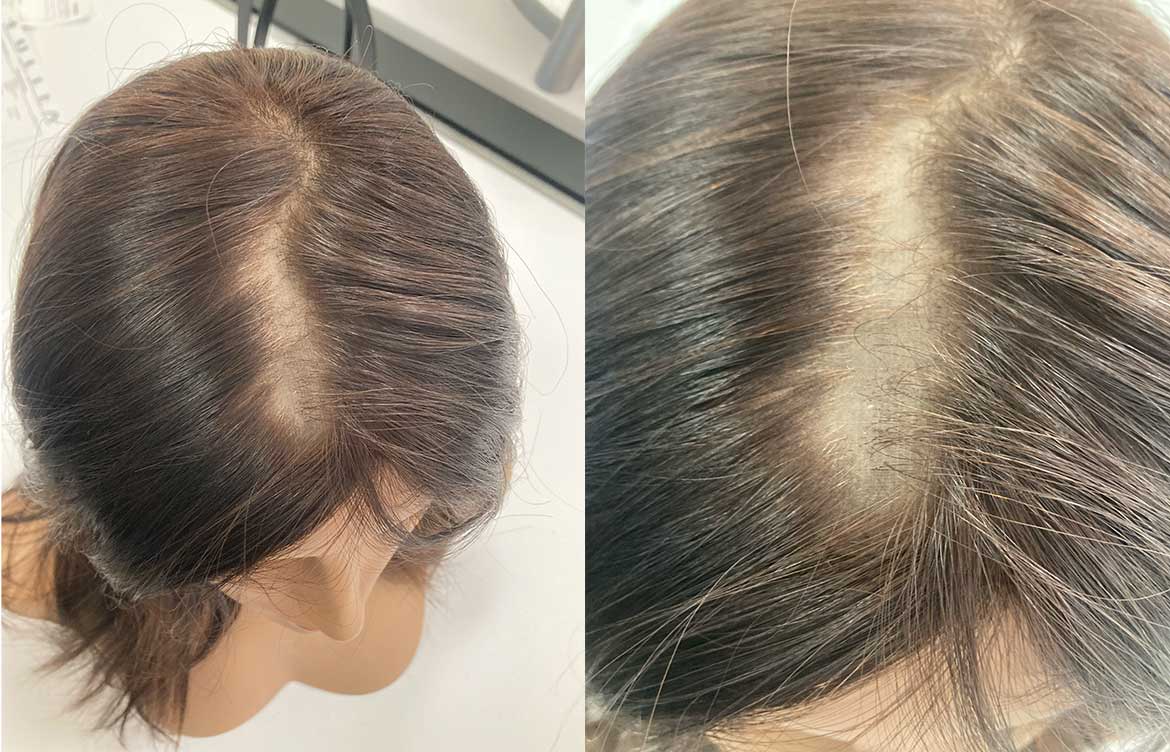Why Is My Wig Shedding? Causes & Solutions

You spent time finding the perfect wig - one that looks and feels just right. But now, you’re noticing stray hairs coming out every time you brush or style it. Is this normal? Or is your wig shedding too much? Excessive shedding can be frustrating, especially when you’ve invested in a high-quality piece and want it to last.
At Daniel Alain, we specialize in premium human hair wigs and understand the concerns that come with wig maintenance. Shedding is something every wig owner experiences to some degree, but knowing what causes it and how to prevent it can help you extend the life of your wig.
In this article, we’ll break down why wigs shed, the most common causes of hair shedding in wigs, and how to stop wig shedding with practical wig maintenance tips. Whether you have a lace front wig, a hand-tied piece, or a wefted wig, you’ll learn the best ways to prevent wig hair loss and keep your wig looking beautiful for as long as possible.
Is Wig Shedding Normal?
If you’ve noticed a few hairs coming loose from your wig, don’t panic - some shedding is completely normal. Just like natural hair, wigs experience wear and tear over time. Even the highest quality human hair wigs will shed a little, especially with regular brushing, styling, and washing.
However, if you’re seeing a lot of hair coming out - more than just a few strands here and there - it could be a sign of a bigger issue. Excessive hair shedding in wigs can happen due to improper care or damage to the cap. And when too much hair is lost, your wig can start to look thinner, making it necessary to replace it sooner than you’d like.
Understanding the difference between normal shedding and excessive shedding is key to keeping your wig in great shape for as long as possible. In the next sections, we’ll explore why wigs shed and how to stop wig shedding with simple maintenance tips.
Common Causes of Wig Shedding
If your wig is shedding more than you’d like, there’s usually a reason behind it. While some shedding is normal, excessive hair loss can be a sign that something isn’t quite right. Let’s break down some of the most common causes of hair shedding in wigs and how to prevent them.
Cause #1: Poor Wig Maintenance
How you care for your wig plays a big role in how much it sheds. Using the wrong tools - like fine-tooth combs or stiff bristle brushes - can pull out more hair than necessary. Brushing too roughly or when the hair is wet can also weaken the strands and cause shedding.
Washing your wig too often, or using shampoos and conditioners with harsh chemicals, can dry out the hair and weaken the knots in lace front wigs or hand-tied pieces. Choosing gentle, wig-friendly products can make all the difference in preserving your wig’s longevity.
Cause #2: Tension on the Wig
If you frequently wear your wig in ponytails, tight braids, or updos, the tension from pulling the hair back can loosen strands over time. Similarly, wearing a wig that’s too tight can put stress on the cap and lead to more shedding.
To prevent this, avoid overly tight hairstyles and make sure your wig fits comfortably - not too loose, but not too snug either.
Cause #3: Improper Washing & Drying Techniques
Washing your wig the wrong way can contribute to shedding. Scrubbing the hair too hard, flipping it upside down in the sink, or using a rough towel to dry it can loosen the strands and weaken the wig’s construction.
Instead, gently wash your wig using a downward motion and blot it dry with a soft towel. Let it air dry on a wig stand to keep the hair fibers intact.
Cause #4: Wearing the Same Style or Part All the Time
Continued brushing and styling the hair in the same way will eventually cause the hair to shed from one spot over time. Even parting the hair in the same way every day puts repeated tension on the same knots, which can lead to gradual thinning or breakage in that area.
Choosing a well-made, high-quality wig can help minimize this issue, but most wigs will shed over time, no matter how well they're made.
Cause #5: Chemical Processing & Coloring
Bleaching, dyeing, or perming a wig can weaken the hair strands and loosen the knots that hold them in place. Even professional treatments can cause damage, but using box dyes or strong chemicals on a wig can be especially harmful.
If you want to change your wig’s color, it’s best to consult a professional who specializes in working with human hair wigs. They’ll know how to process the hair safely without compromising its integrity.
How Can I Stop My Wig from Shedding?
Seeing hair come loose from your wig can be frustrating, especially if you’re worried that excessive shedding means you’ll have to replace it sooner than expected. You might have wondered, Is this normal? Did I do something wrong? or Is my wig just not made to last?
Now, you know that while some shedding is unavoidable, excessive shedding often happens due to poor maintenance, tension, or even the way a wig was constructed. We’ve shared wig maintenance tips to help minimize shedding, from brushing techniques to proper washing and storage. However, no amount of careful maintenance can stop a low-quality wig from shedding if it simply wasn’t made to last.
If you're concerned about how long your wig will hold up, it’s important to consider how long a human hair wig lasts and what factors influence its durability. Investing in a well-made wig and taking the right steps to care for it will help you get the most out of your piece, ensuring it stays looking beautiful for as long as possible.

.jpeg)
